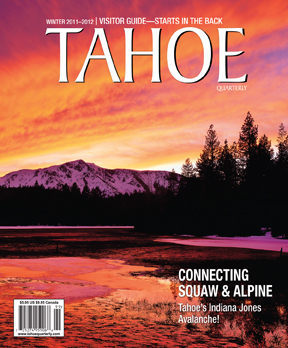Old Guys Rule
To those age-group athletes fretting that their best years are behind them, think again. The good news: If you’ve been hammering the roads, trails, slopes and waterways for most of your adult life, you’ve probably lost only a little of your overall fitness.
Take solace in local race results—in cross-country skiing, quinquagenarians regularly trounce athletes half their age. In ultra-marathons, athletes seem to be just getting warmed up in their 40s (the average age of a Western States 100 runner is about 45). Rock climbers are summiting even into retirement age, as evidenced by a local 60-something ski coach who is reputed to have recently completed a sport climb rated 5.13c. Outside of Tahoe, many climbers into their sixth and even seventh decades are climbing close to the limits of the sport.
Now for the bad news: Can you say “wind sprints?” In addition to honing nutrition and core strength, you’re going to have to trade a few of your cherished endorphin-fests for shorter, power-heavy workouts each week to goose your fasttwitch fibers, the key to maintaining and gaining athleticism as you mellow.
Strength training
“If masters athletes want bigger gains in their performance, intensity is key,” says Joe Dengler, a Truckee-based physical therapist and personal trainer, and producer of a new strengthtraining DVD for masters cross-country skiers.
Beyond the age of 40, explains Dengler, our bodies cannibalize fast-twitch muscle fiber—the reason you don’t see many 40-year-olds winning sprint-distance events. And though you may not think you have a need for speed, you rely on fast-twitch muscles for short, powerful efforts, such as hopping through breakable crust, pulling through the crux of a strenuous climb or spinning your granny gear up a deviously steep pitch of singletrack. Dengler advises all athletes to train fast-twitch fibers, but especially masters athletes since their inventory is in constant demand—and decay. Though changing out a training regimen might create short-term pain, the long-term gains are enormous: Athletes of all ages can increase power and speed, and literally stall the aging process. How? By utilizing plyometrics, speed intervals and weight training. We’re talking as intense as P90X workouts, but customized to your sport.
Slowing Down and Supplementing
Plyometrics (exercise training for muscle elastic strength) and speed represent powerful medicine, but their downside is a potential show-stopper: injuries. Dr. Andrew Pasternak, a Reno-based family practitioner and co-founder of Silver Sage Sports Performance, sees a lot of masters endurance athletes in his practice, often runners, cyclists and cross-country skiers. He cautions them about overtraining.
“As you get older, recovery takes longer,” says Pasternak. “Getting the most out of a high-intensity workout requires an athlete to be well-rested ahead of time. You don’t tend to get faster with more training; you get faster with recovery.”
“For devoted athletes, resting takes more discipline than training,” Dengler says. Fortunately, rest isn’t synonymous with repose. “Active rest—walking, going out for an easy ride or run—is better than taking a full day off,” he says.
To avoid injuries, Pasternak recommends supplementing in-season training with yoga or Pilates in order to develop core strength and to keep overuse problems at bay. Both he and Dengler are also proponents of protein— lots of it. Dengler recommends 0.8 grams per kilogram of body weight per day for masters athletes (see sidebar). Pasternak advocates a balanced diet, heavy on fruits and vegetables, and recommends supplements such as CoQ10, and omega 3/6/9 fatty acids.
What about the host of performance enhancing drugs that are widely available from anti-aging specialists and can, to a degree, turn back the clock on the symptoms of senescence? The Doper Next Door is a new tell-all book by 45-yearold middle-of-the-pack cyclist Andrew Tilin chronicling his dalliances with testosterone. Long story short: It works. “I know there are athletes who are taking testosterone and growth hormones,” says Pasternak. “At some level, they do help performance. People feel better, and they recover faster. But I’m still a little hesitant on some of the safety data. My bias is to advise getting enough sleep and recovering well.”
So there you have it: intensity, specificity, rest, nutrition and good sleep.
At the end of the day, vigorous activity and active recovery is your ticket to increased athleticism as you age— whether you’re a veteran athlete wanting to notch it up, or if you’re on the cusp of launching a career as a marathoner. Your mantra? Go fast. Not too much. And have fun. By Brad Rassler. TQ
Category: Uncategorized







